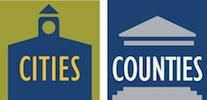Zoning Codes
 Zoning codes must be consistent with the general plan and are used to implement a plan’s guidelines. These codes can describe parking standards, building intensities (densities), allowable land uses and other aspects of the built environment. Bad zoning codes can stymie active transportation, even if a city or county’s intentions are good.
Zoning codes must be consistent with the general plan and are used to implement a plan’s guidelines. These codes can describe parking standards, building intensities (densities), allowable land uses and other aspects of the built environment. Bad zoning codes can stymie active transportation, even if a city or county’s intentions are good.
For example, improving the zoning code can :
- Allow for greater integration of land use types by decreasing distance barriers for bicycling and walking
- Set a maximum block length in order to promote intersection density and greater connectivity
- Require bicycle and pedestrian connectivity through cul-de-sacs
Form-based codes are a type of zoning code becoming increasingly popular. While traditional zoning codes focus on delineating land uses, form-based codes focus on regulating the physical form of development- building heights, street width, architectural style, etc. – in order to achieve a community’s vision.
| Ideas/Roles: |
| Updates to zoning codes can allow for greater densities near schools, which in turn encourage active transportation to and from school. |
| Examples: |
|
The City of Mountain View resolved to amend its zoning codes to allow for increases in density, particularly around transit stations and key intersections along the El Camino Real Corridor. In conjunction with strengthening pedestrian and bicycle linkages, this adjustment will expand the safe routes to school pathways. |




